Europe, British Isles, North East Wales, Flintshire, Rhuddlan [Map]
Rhuddlan is in Flintshire, North East Wales, Welsh Castles and Towns of Edward I.
Around Oct 1062 King Harold II of England (age 40) was given approval to attack Gruffydd ap Llywelyn King Wales' Court at Rhuddlan [Map]. Gruffydd ap Llywelyn King Wales was nearly captured but managed to escape to sea.
Anglo-Saxon Chronicle. 1063. This year went Earl Harold (age 41), after mid-winter, from Gloucester to Rhyddlan [Map]; which belonged to Griffin: and that habitation he burned, with his ships and all the rigging belonging thereto; and put him to flight. Then in the gang-days went Harold with his ships from Bristol about Wales; where he made a truce with the people, and they gave him hostages. Tosty (age 37) meanwhile advanced with a land-force against them, and plundered the land. But in the harvest of the same year was King Griffin slain, on the nones of August, by his own men, through the war that he waged with Earl Harold (age 41). He was king over all the Welsh nation. And his head was brought to Earl Harold (age 41); who sent it to the king (age 60), with his ship's head, and the rigging therewith. King Edward (age 60) committed the land to his two brothers, Blethgent (age 50) and Rigwatle; who swore oaths, and gave hostages to the king and to the earl, that they would be faithful to him in all things, ready to aid him everywhere by water and land, and would pay him such tribute from the land as was paid long before to other kings.
John of Worcester. 1063. When Christmas was over, Harold (age 41), the brave earl of Wessex, by king Edward's (age 60) order, put himself at the head of a small troop of horse, and proceeded by rapid marches from Gloucester, where the king then was, to Rhuddlan [Map], [Flintshire] with the determination to punish Griffyth, king of Wales, for his continual ravages on the English marshes, and his many insults to his lord, king Edward, by taking his life. But Griffyth, being forewarned of the earl's approach, fled with his attendants, and escaped by getting aboard a ship, but not without extreme difficulty. Harold (age 41), finding he was gone, ordered his palace to be burnt, and setting fire to his ships and all their rigging, began his march homeward the same day. But about Rogation days [20 May] he sailed from Bristol with a naval force, and circumnavigated a great part of Wales. His brother met him, by the king's command, with a body of cavalry, and uniting their forces, they began to lay waste that part of the country. In consequence, the Welsh were reduced to submission, and, giving hostages, engaged to pay him tribute, and they deposed and banished their king, Griffyth.
On 22 Jun 1283 Dafydd ap Gruffudd Aberffraw Prince of Wales (age 44) and Owain ap Dafydd Aberffraw (age 8) were captured at Nanhysglain Bangor [Map]. Dafydd (age 44), seriously wounded in the struggle, was brought to King Edward's (age 44) camp at Rhuddlan [Map] that same night. Dafydd (age 44) was taken from here to Chester [Map] and then on to Shrewsbury, Shropshire [Map]. Dafydd (age 44) and Dafydd's wife Elizabeth de Ferrers (age 43), their daughter Gwladys, infant niece Gwenllian ferch Llywelyn (age 1), and Dafydd's six illegitimate daughters were also taken prisoner at the same time.

Rhuddlan Castle![]()
Views of Rhuddlan Castle [Map] showing the canalised River Clywd.
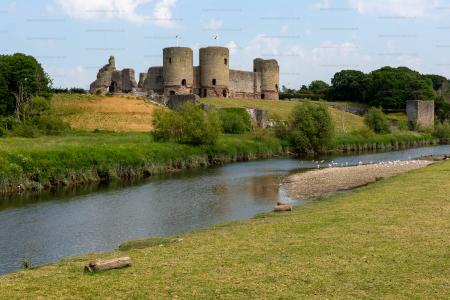
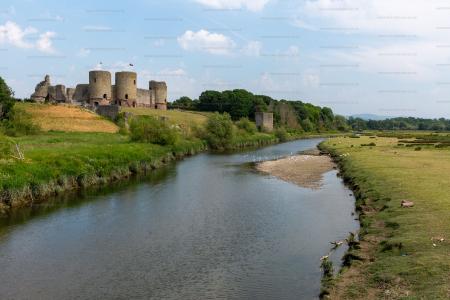
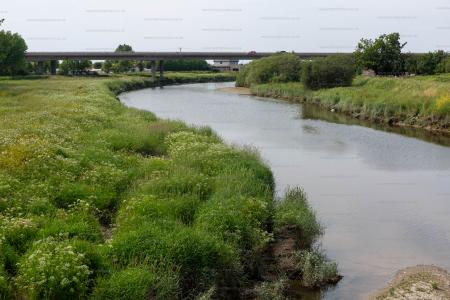
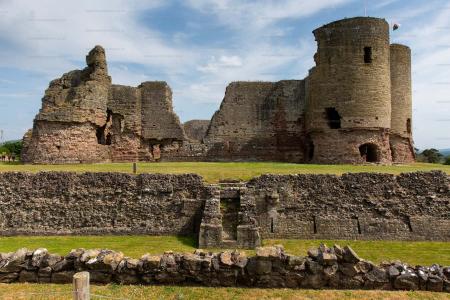
The River Clwyd rises 8km north-west Corwen, Denbighshire [Map] from where it flows past Ruthin Castle [Map], Denbigh [Map], St Asaph [Map] to Rhuddlan Castle [Map], from where the remaining 4km were canalised when the castle wads constructed, entering the Irish Sea at Rhyl [Map].
The Itinerary of Archbishop Baldwin through Wales: Book 2 Chapter 10. Having crossed the river Conwy,162 or rather an arm of the sea, under Deganwy [Map], leaving the Cistercian monastery of Conwy [Map]163 on the western bank of the river to our right hand, we arrived at Ruthlan [Map], a noble castle on the river Cloyd, belonging to David, the eldest son of Owen164 where, at the earnest invitation of David himself, we were handsomely entertained that night.
Note 162. The travellers pursuing their journey along the sea coast, crossed the aestuary of the river Conway under Deganwy, a fortress of very remote antiquity.
Note 163. At this period the Cistercian monastery of Conway was in its infancy, for its foundation has been attributed to Llewelyn ap Iorwerth, in the year 1185, (only three years previous to Baldwin's visitation,) who endowed it with very extensive possessions and singular privileges. Like Stratflur, this abbey was the repository of the national records, and the mausoleum of many of its princes.
Note 164. [David was the illegitimate son of Owen Gwynedd, and had dispossessed his brother, Iorwerth Drwyndwn.]
In 1277 Rhuddlan Castle [Map] was commissioned by King Edward "Longshanks" I of England (age 37). Work was initially started by Master Betram but was completed by James of St George Master Mason. It was completed in 1282.
In 1282 Rhuddlan Castle [Map] was besieged by the Welsh until relieved by Amadeus V "Great" Savoy (age 32).
On 07 Aug 1282 Princess Elizabeth of Rhuddlan Countess Essex, Hereford and Holland was born to King Edward "Longshanks" I of England (age 43) and Eleanor of Castile Queen Consort England (age 41) at Rhuddlan Castle [Map].
On 23 Jun 1283 Owain ap Dafydd Aberffraw (age 8) was imprisoned at Rhuddlan Castle [Map].
Archaeologia Volume 16 Section VIII. Copy of a Roll of the Expenses of King Edward the First at Rhuddlan Castle [Map], in Wales , in the tenth and eleventh years of his reign [1281-1282], remaining among the Records in the Tower, communicated by Samuel Lysons , Esq. F. R. S. Director: with a Translation, by the Rev. John Brand, M. A. Secretary. Read Nov. 27, 1806.
Rhuddlan Castle Plan![]()
The Welsh Castles and Towns of Edward I comprise a number of castles, some with associated planned towns, commissioned as a means of containing the Welsh. They included, from east to west, Flint Castle [Map], Rhuddlan, Conwy Castle [Map], Beaumaris Castle [Map], Caernarfon Castle [Map], Harlech Castle [Map] and Aberystwyth Castle [Map]. Those not on the coast include Chirk Castle [Map], Denbigh Castle and Town Walls and Builth Castle [Map]. Arguably, Holt Castle [Map] and Criccieth Castle [Map] should be included.
Europe, British Isles, North East Wales, Flintshire, Rhuddlan Castle Plan, West Gatehouse [Map]
West Gatehouse [Map]. The missing masonary suggest the upper part of the front wall now gone. View of the inside of the guarderobe.
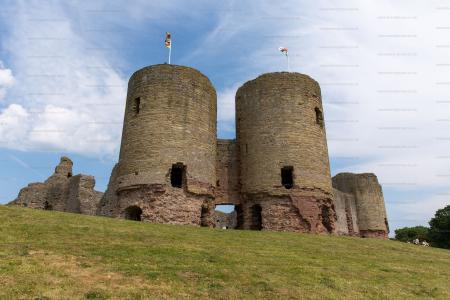
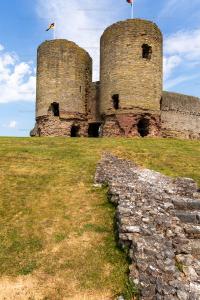
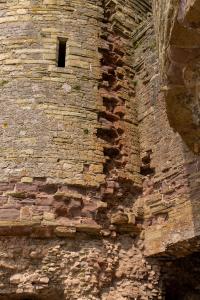
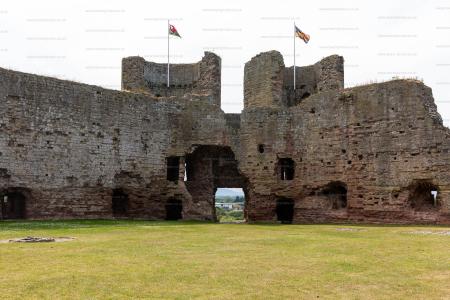
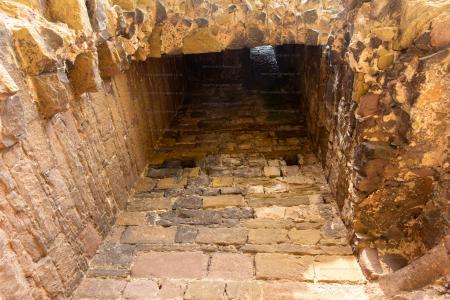
Europe, British Isles, North East Wales, Flintshire, Rhuddlan Castle Plan, East Gatehouse [Map]
East Gatehouse [Map].
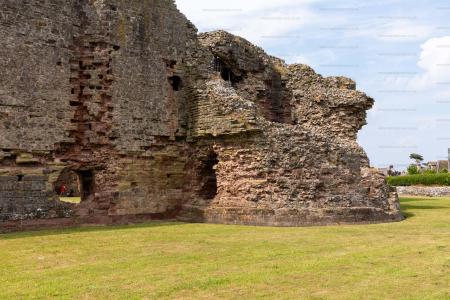
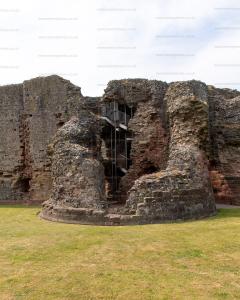
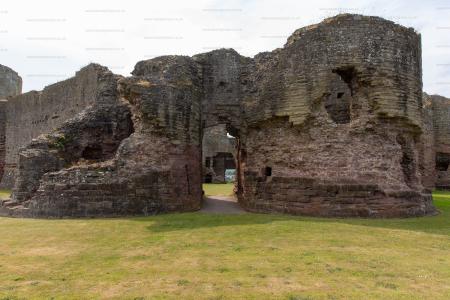
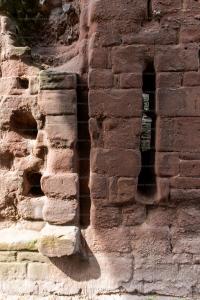
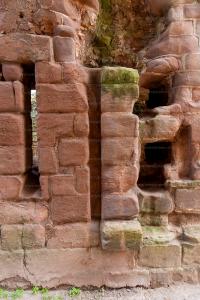
Europe, British Isles, North East Wales, Flintshire, Rhuddlan Castle Plan, Inner Ward [Map]
Inner Ward [Map] and the outside of the Curtain Wall, with it exterior base projection and the drainage slots.
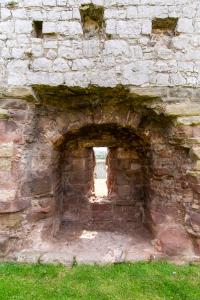
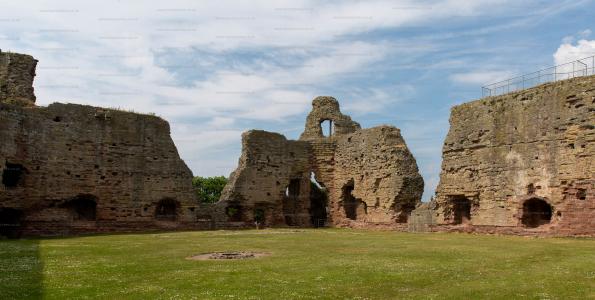
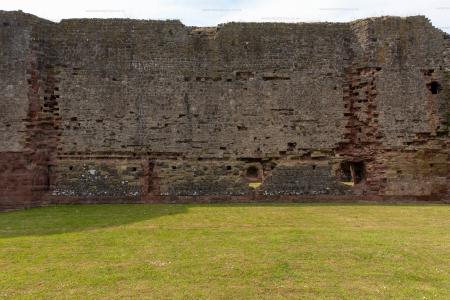
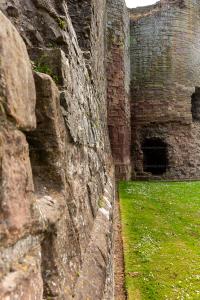
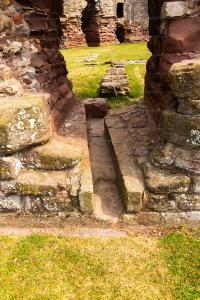
Europe, British Isles, North East Wales, Flintshire, Rhuddlan Castle Plan, North Tower [Map]
North Tower [Map].
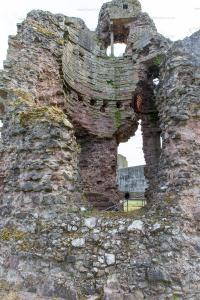
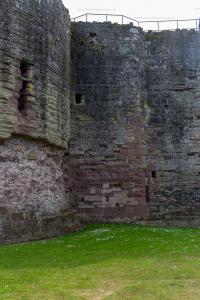
Europe, British Isles, North East Wales, Flintshire, Rhuddlan Castle Plan, South Tower [Map]
View of the South Tower [Map]. Note the guarderobe projecting off the wall.
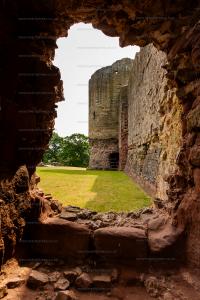
The remains of the Friary Gate [Map] with the South Tower [Map] beyond.
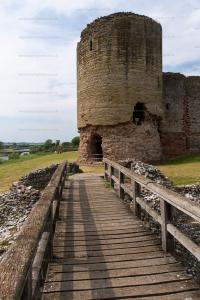
Europe, British Isles, North East Wales, Flintshire, Rhuddlan Castle Plan, Friary Gate [Map]
The remains of the Friary Gate [Map] with the South Tower [Map] beyond.

Europe, British Isles, North East Wales, Flintshire, Rhuddlan Castle Plan, Gillot's Tower [Map]
Gillot's Tower [Map] over-looking the Dock Gate [Map]. Gillot’s Tower is probably named after Gillot de Chalons, a mason who was working at Conwy in 1286 and had been previously employed at Rhuddlan. Four storeys high and projecting from the southern corner of the outer ward, the original entrance was on the third storey. The two windows in this room are almost the only ones in the building which retain their dressed stonework intact.
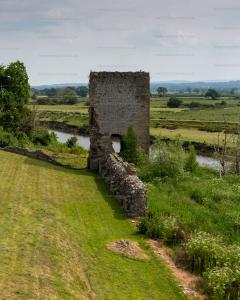
Europe, British Isles, North East Wales, Flintshire, Rhuddlan Castle Plan, Dock aka River Gate [Map]
Dock aka River Gate [Map].
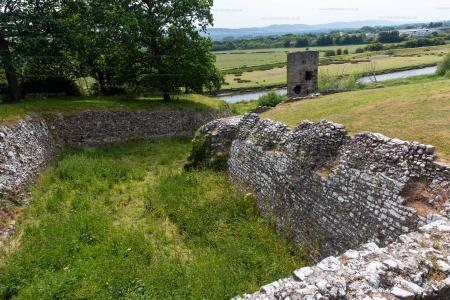
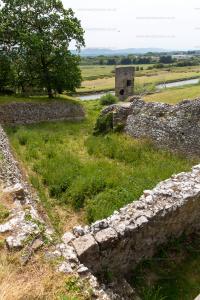
Europe, British Isles, North East Wales, Flintshire, Rhuddlan Castle Plan, Unamed Tower [Map]
Unamed Tower [Map].
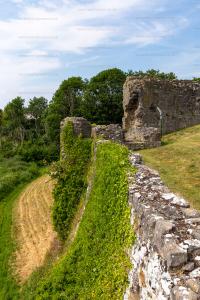
Europe, British Isles, North East Wales, Flintshire, Rhuddlan Castle Plan, Moat
Moat.
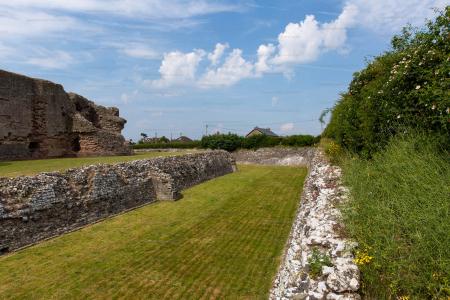
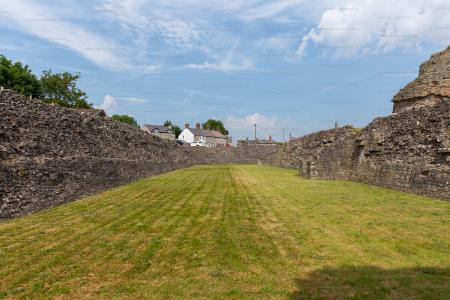
Section of the moat showing detail of the outer wall with its arrow loops.
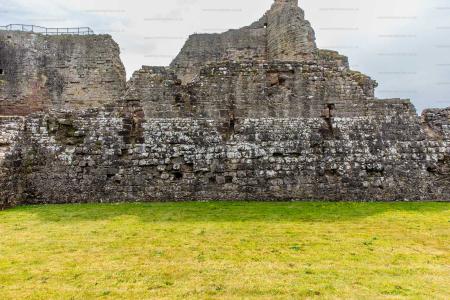
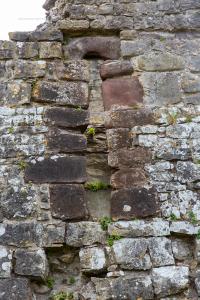
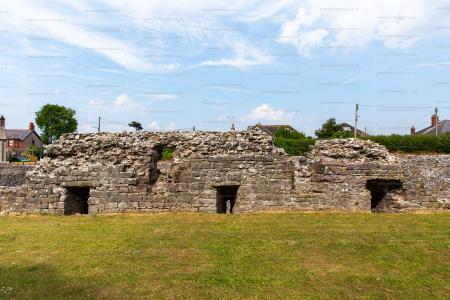
Detail of one of the Tower that provided access to the Moat from the Outer Ward.
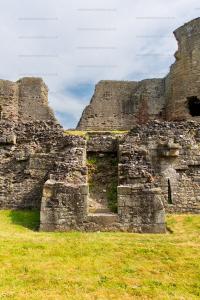
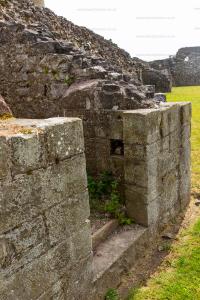
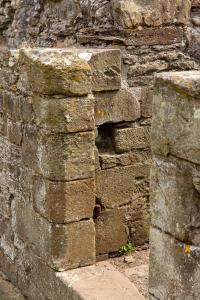
Detail of the Moat nearest to the [Map] with what appear to be drainage openings.
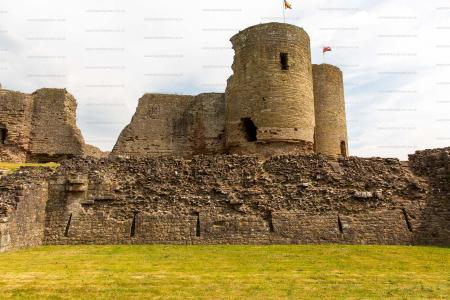
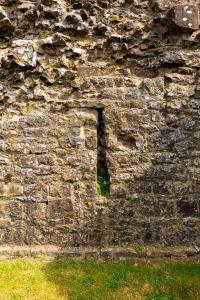
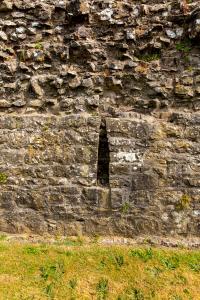
Europe, British Isles, North East Wales, Flintshire, Rhuddlan Friary [Map]![]()
1258. Rhuddlan Friary [Map] was founded by Llywelyn ap Gruffudd. It was dissolved in 1538. The former friary is now a farm.
On 05 Jan 1268 Bishop Ainan II, Prior of Rhuddlan Friary [Map], was elected Bishop of St Asaph.
In 1291 Eleanor of Castile Queen Consort England gave 100s to Rhuddlan Friary [Map] and to each of the other four Dominican houses in Wales.
In 1370 Bishop Gervase de Castro left sixty shillings to the friars of Rhuddlan Friary [Map].
In 1373 Llewelyn ap Madoc, bishop of St Asaph, bequeathed twenty shillings to Rhuddlan Friary [Map].
Flintshire Historical Society V5 1914. 1742. Ruins of the Domincan Friary [Map], Rhuddlan. Drawn and Engaved by S & N Buck, 1742.
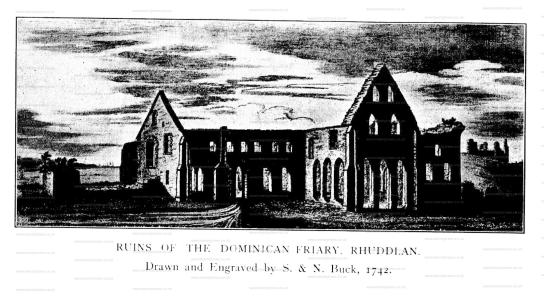
Archaeologia Cambrensis 1887 Page 349. Proceeding from the Castle a distance of about 300 yards, to the south, Twt Hill [Map], the site of the earlier castle built by Llywelyn ap Sitsyllt, King of Gwynedd c. 1015, was passed; and a little further on are the remains of the Dominican Priory [Map], now called the Abbey. Here, again, under the same guidance, were seen the windows of the monks' dormitory, above the present barn ; and built up into the Avails, a large monumental slab with an incised effigy of an Archbishop of Rages, a former brother of the house. Near it was a cross ragule, memorial to "De Bridelton' cuius a'ie p'piciet." Other floriated crosses lie near the front door of the farmhouse, whilst in the garden wall are portions of window-tracery. There is a much damaged effigy of a knight in the wall of the stable; and behind the buildings on the opposite side of the yard (the western) may be seen several Pointed windows that show that portion to have been a part of the old monastic building. The property now belongs to Sir W. G. Williams, Bart (age 42)., of Bodelwyddan, and it is much to be desired that these interesting relics should be more carefully protected. The lateness of the hour and the shades of evening rendered it too dark to see the church, and it had reluctantly to be omitted for the day.
Archaeologia Cambrensis 1925 Page 230. Rhuddlan Friary [Map] Effigy. At a distance of a mile from the town of Rhuddlan, lying just beyond its castle, stand the ruins of what was once a Dominican Friary. Tradition assigns its origin as a Friary to seven Welsh gentlemen in 1197. If this be correct, then it must have been taken over by the Dominicans in the early part of the thirteenth century. The first historical notice is the appointment of Anian, the prior of Rhuddlan- "Y Brawd Du" - as Bishop of St. Asaph, in 1268. To-day little remains of this Friary. In years gone by, it formed a quarry for building, and now stand only the remains of the dormitory and domestic offices transformed into barns. Fixed in some of the walls in the open shippon were various effigies-all more or less in imperfect condition and exposed to the weather. Chief amongst these was the tombstone monument of William Fresney, Archbishop of Rages (Edessa), of which a description has been already published in Arch. Camb., 1912, pp. 121-5. The monument consists of a life-sized figure of the Archbishop, with crosier, mitre, chasuble, alb and maniple, with hand uplifted in blessing, and the inscription, now more or less illegible in parts-" Priez pour l'alme Frere William Ercheveske de Rages."
As the stone was beginning to show serious signs of weathering, the permission of Capt. Conwy, R.N., C.M.G., the owner of the property, was obtained for its removal to safer quarters, and on November 9th and 10th, 1923, the monument was safely removed from the Friary, under the superintendence of the Rev. W. J. Davies, Vicar of Rhuddlan, and Mr. J. O. Hughes, the estate agent, with some of his workmen, and re-erected against the north side of the sacrarium of the Parish Church.
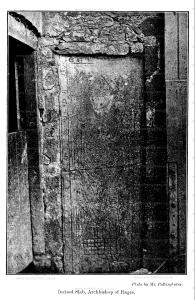
Europe, British Isles, North East Wales, Flintshire, Rhuddlan, St Mary's Church [Map]![]()
St Mary's Church, Rhuddlan [Map].
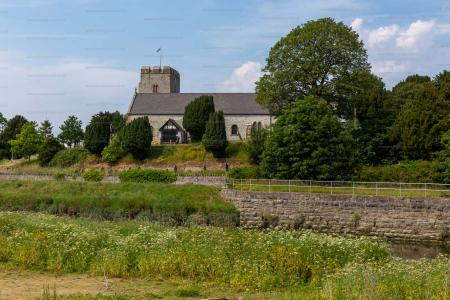
Wales Illustrated North Wales. Rhuddlan Bridge, Church [Map] and Castle [Map].
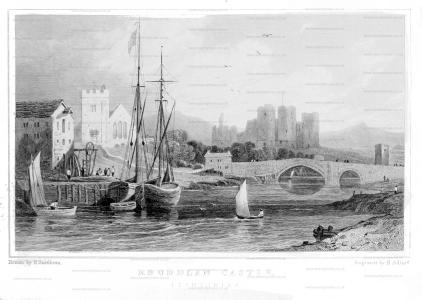
Twthill Castle![]()
In 1073 Robert of Rhuddlan commissioned the construction of Twthill Castle [Map]. A borough became established beside the castle and by 1086, eighteen burgesses lived there; the buildings included a church and a mint.
Archaeologia Cambrensis 1887 Page 349. Proceeding from the Castle a distance of about 300 yards, to the south, Twt Hill [Map], the site of the earlier castle built by Llywelyn ap Sitsyllt, King of Gwynedd c. 1015, was passed; and a little further on are the remains of the Dominican Priory [Map], now called the Abbey. Here, again, under the same guidance, were seen the windows of the monks' dormitory, above the present barn ; and built up into the Avails, a large monumental slab with an incised effigy of an Archbishop of Rages, a former brother of the house. Near it was a cross ragule, memorial to "De Bridelton' cuius a'ie p'piciet." Other floriated crosses lie near the front door of the farmhouse, whilst in the garden wall are portions of window-tracery. There is a much damaged effigy of a knight in the wall of the stable; and behind the buildings on the opposite side of the yard (the western) may be seen several Pointed windows that show that portion to have been a part of the old monastic building. The property now belongs to Sir W. G. Williams, Bart (age 42)., of Bodelwyddan, and it is much to be desired that these interesting relics should be more carefully protected. The lateness of the hour and the shades of evening rendered it too dark to see the church, and it had reluctantly to be omitted for the day.